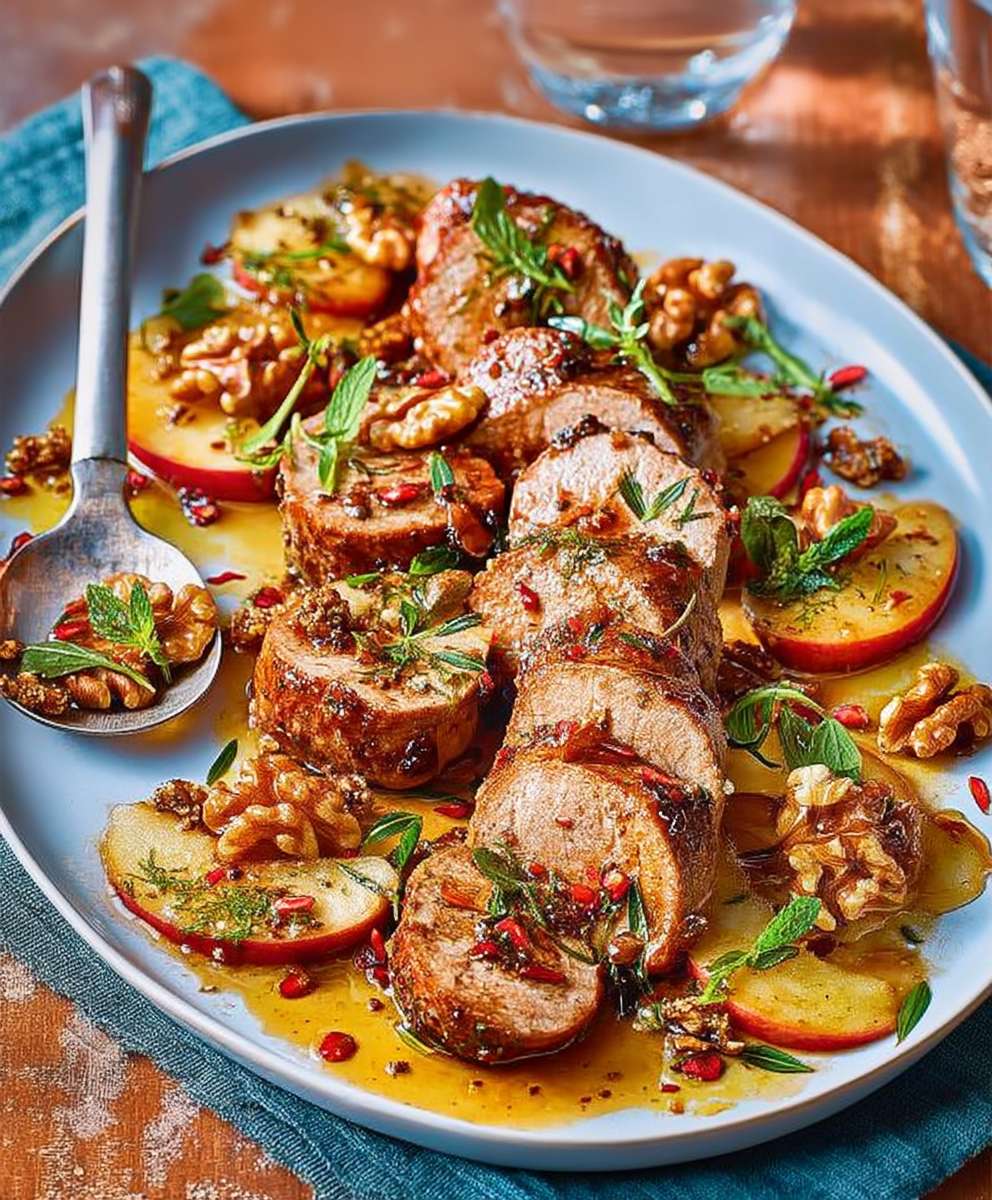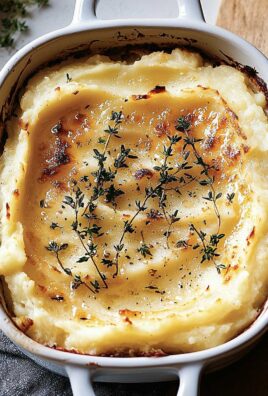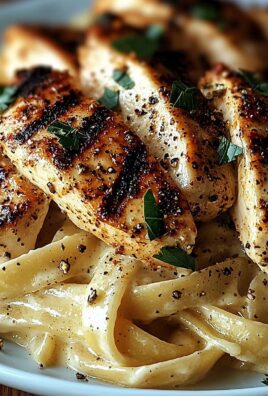Pork tenderloin with apples and walnuts just the name conjures up images of cozy autumn evenings and the comforting aroma of a home-cooked meal, doesn’t it? I’m thrilled to share this recipe with you, a dish that’s not only incredibly delicious but also surprisingly simple to prepare. Forget slaving away in the kitchen for hours; this elegant meal comes together with minimal effort, making it perfect for a weeknight dinner or a special occasion.
While the exact origins of combining pork with fruit are a bit hazy, the pairing has been a culinary staple for centuries, particularly in European cuisines. Apples, with their natural sweetness and slight tartness, beautifully complement the richness of pork. The addition of walnuts provides a delightful textural contrast and a nutty depth of flavor that elevates the dish to another level. Think of it as a symphony of flavors and textures dancing on your palate!
What makes pork tenderloin with apples and walnuts so universally loved? It’s the perfect balance of sweet and savory, tender and crunchy. The pork tenderloin itself is incredibly lean and cooks quickly, ensuring a juicy and flavorful result. The apples caramelize beautifully, adding a touch of sweetness that’s not overpowering. And those walnuts? They provide a satisfying crunch and a subtle earthiness that ties everything together. Plus, it’s a dish that feels both sophisticated and approachable, making it a guaranteed crowd-pleaser. So, let’s get cooking and create a memorable meal together!
Ingredients:
- Pork Tenderloin: 2 (about 1 pound each), trimmed of silver skin
- Apples: 2 large, such as Honeycrisp or Granny Smith, peeled, cored, and diced
- Walnuts: 1/2 cup, chopped
- Onion: 1 medium, finely chopped
- Garlic: 2 cloves, minced
- Chicken Broth: 1 cup
- Apple Cider Vinegar: 1/4 cup
- Dijon Mustard: 2 tablespoons
- Brown Sugar: 1 tablespoon, packed
- Dried Thyme: 1 teaspoon
- Dried Sage: 1/2 teaspoon
- Olive Oil: 2 tablespoons
- Butter: 2 tablespoons
- Salt: To taste
- Black Pepper: To taste
- Fresh Parsley: 2 tablespoons, chopped (for garnish)
Preparing the Pork Tenderloin:
- Prepare the Pork: Pat the pork tenderloins dry with paper towels. This helps them to brown nicely. Season generously with salt and pepper on all sides. Don’t be shy with the seasoning!
- Sear the Pork: Heat 1 tablespoon of olive oil in a large oven-safe skillet (cast iron is ideal) over medium-high heat. Once the oil is shimmering, carefully place the pork tenderloins in the hot skillet. Sear for about 3-4 minutes per side, until nicely browned. The goal here is to develop a flavorful crust, not to cook the pork all the way through.
- Remove from Skillet: Once the pork is seared, remove it from the skillet and set it aside on a plate. Don’t clean the skillet yet we’ll use those flavorful browned bits later!
Making the Apple-Walnut Sauce:
- Sauté the Aromatics: Add the remaining 1 tablespoon of olive oil and 2 tablespoons of butter to the same skillet. Reduce the heat to medium. Add the chopped onion and cook until softened and translucent, about 5-7 minutes. Stir occasionally to prevent burning.
- Add Garlic and Spices: Add the minced garlic, dried thyme, and dried sage to the skillet. Cook for another minute, until fragrant. Be careful not to burn the garlic, as it can become bitter.
- Deglaze the Pan: Pour in the apple cider vinegar and use a wooden spoon to scrape up any browned bits from the bottom of the skillet. These browned bits are packed with flavor and will add depth to the sauce.
- Add Apples and Walnuts: Add the diced apples and chopped walnuts to the skillet. Cook for about 5-7 minutes, until the apples are slightly softened but still hold their shape. Stir occasionally.
- Add Broth and Seasonings: Pour in the chicken broth and stir in the Dijon mustard and brown sugar. Bring the mixture to a simmer. Season with salt and pepper to taste. Remember that the pork is already seasoned, so taste the sauce before adding too much salt.
- Simmer the Sauce: Reduce the heat to low and simmer the sauce for about 10-15 minutes, or until it has thickened slightly. Stir occasionally to prevent sticking. The sauce should be able to coat the back of a spoon.
Baking the Pork Tenderloin:
- Return Pork to Skillet: Place the seared pork tenderloins back into the skillet, nestling them into the apple-walnut sauce. Make sure the sauce is evenly distributed around the pork.
- Bake in the Oven: Transfer the skillet to the preheated oven. Bake for 15-20 minutes, or until the internal temperature of the pork reaches 145°F (63°C). Use a meat thermometer to ensure accurate doneness. Insert the thermometer into the thickest part of the pork.
- Rest the Pork: Remove the skillet from the oven and transfer the pork tenderloins to a cutting board. Tent them loosely with foil and let them rest for at least 5-10 minutes before slicing. This allows the juices to redistribute, resulting in a more tender and flavorful pork.
Slicing and Serving:
- Slice the Pork: After the pork has rested, slice it thinly against the grain. This will make it easier to chew.
- Serve with Sauce: Arrange the sliced pork on a serving platter and spoon the apple-walnut sauce over the top. Make sure each slice gets a generous helping of the delicious sauce.
- Garnish: Garnish with fresh chopped parsley for a pop of color and freshness.
- Serving Suggestions: Serve the pork tenderloin with mashed potatoes, roasted vegetables, rice, or quinoa for a complete and satisfying meal. A side of green beans or asparagus would also complement the dish nicely.
Tips for Success:
- Don’t Overcook the Pork: Pork tenderloin is lean and can become dry if overcooked. Use a meat thermometer to ensure it reaches an internal temperature of 145°F (63°C).
- Let the Pork Rest: Resting the pork after cooking is crucial for retaining its juices and tenderness. Don’t skip this step!
- Adjust the Sweetness: If you prefer a less sweet sauce, reduce the amount of brown sugar. You can also add a squeeze of lemon juice to balance the sweetness.
- Use High-Quality Ingredients: Using fresh, high-quality ingredients will make a big difference in the flavor of the dish. Choose ripe, flavorful apples and fresh herbs.
- Make it Ahead: You can prepare the apple-walnut sauce ahead of time and store it in the refrigerator for up to 2 days. Simply reheat it before adding the pork.
- Spice it Up: For a little kick, add a pinch of red pepper flakes to the sauce.
- Nut Allergy Alternative: If you have a nut allergy, you can omit the walnuts or substitute them with toasted pumpkin seeds or sunflower seeds.
Variations:
- Add Dried Cranberries: For a festive twist, add 1/4 cup of dried cranberries to the sauce.
- Use Different Apples: Experiment with different types of apples, such as Fuji or Gala, to find your favorite flavor combination.
- Add a Splash of Cream: For a richer sauce, stir in a splash of heavy cream or half-and-half at the end of cooking.
- Make it Gluten-Free: Ensure that the chicken broth you use is gluten-free.
Storage Instructions:
- Refrigerate: Store leftover pork tenderloin and apple-walnut sauce in an airtight container in the refrigerator for up to 3 days.
- Reheat: Reheat the pork and sauce gently in a skillet over medium-low heat, or in the microwave. Add a splash of chicken broth or water if the sauce becomes too thick.

Conclusion:
And there you have it! This pork tenderloin with apples and walnuts recipe is truly a must-try for so many reasons. First and foremost, the flavor combination is simply divine. The sweetness of the apples perfectly complements the savory pork, while the walnuts add a delightful crunch and nutty depth that elevates the entire dish. It’s a symphony of textures and tastes that will leave you wanting more.
But beyond the incredible flavor, this recipe is also surprisingly easy to make. It requires minimal prep time and the cooking process is straightforward, making it perfect for a weeknight dinner or a special occasion. You don’t need to be a seasoned chef to achieve restaurant-quality results. I promise, even if you’re a beginner in the kitchen, you can confidently whip up this impressive meal.
Furthermore, this dish is incredibly versatile. Feel free to experiment with different types of apples. Granny Smith apples will provide a tart contrast, while Honeycrisp apples will offer a sweeter, more mellow flavor. You could also substitute pecans or almonds for the walnuts, depending on your preference. For a richer sauce, consider adding a splash of apple cider vinegar or a dollop of Dijon mustard.
Serving Suggestions & Variations:
* Serve this delectable pork tenderloin with a side of roasted Brussels sprouts or asparagus for a complete and balanced meal.
* Mashed sweet potatoes or creamy polenta would also be excellent accompaniments.
* For a lighter option, serve it over a bed of mixed greens with a light vinaigrette.
* If you’re feeling adventurous, try adding a sprinkle of blue cheese crumbles to the finished dish for an extra layer of flavor.
* Consider deglazing the pan with a bit of apple brandy for an even more intense apple flavor in the sauce.
* Leftover pork tenderloin is fantastic in sandwiches, salads, or even as a pizza topping!
I truly believe that this pork tenderloin with apples and walnuts will become a new favorite in your household. It’s a dish that’s both comforting and elegant, perfect for impressing guests or simply treating yourself to a delicious and satisfying meal. The combination of sweet, savory, and nutty flavors is simply irresistible, and the ease of preparation makes it a winner in my book.
So, what are you waiting for? Gather your ingredients, preheat your oven, and get ready to experience the magic of this recipe. I’m confident that you’ll love it as much as I do. And most importantly, don’t be afraid to get creative and put your own spin on it. Cooking should be fun and experimental!
I’m so excited for you to try this recipe and I can’t wait to hear about your experience. Please, please, please share your photos and feedback in the comments below. Let me know what variations you tried, what sides you served it with, and how much your family enjoyed it. Your feedback is invaluable and helps me to continue creating recipes that you’ll love. Happy cooking! I am sure you will enjoy this pork tenderloin recipe.
Pork Tenderloin Apples Walnuts: A Delicious and Easy Recipe
Tender pork tenderloin seared and baked in a flavorful apple-walnut sauce with aromatic spices. An easy meal perfect for any occasion.
Ingredients
- 2 Pork Tenderloins (about 1 pound each), trimmed of silver skin
- 2 large Apples (Honeycrisp or Granny Smith), peeled, cored, and diced
- 1/2 cup Walnuts, chopped
- 1 medium Onion, finely chopped
- 2 cloves Garlic, minced
- 1 cup Chicken Broth
- 1/4 cup Apple Cider Vinegar
- 2 tablespoons Dijon Mustard
- 1 tablespoon Brown Sugar, packed
- 1 teaspoon Dried Thyme
- 1/2 teaspoon Dried Sage
- 2 tablespoons Olive Oil
- 2 tablespoons Butter
- Salt: To taste
- Black Pepper: To taste
- 2 tablespoons Fresh Parsley, chopped (for garnish)
Instructions
- Prepare the Pork: Pat the pork tenderloins dry with paper towels. Season generously with salt and pepper on all sides.
- Sear the Pork: Heat 1 tablespoon of olive oil in a large oven-safe skillet (cast iron is ideal) over medium-high heat. Sear the pork tenderloins for about 3-4 minutes per side, until nicely browned.
- Remove from Skillet: Remove the pork from the skillet and set aside.
- Sauté the Aromatics: Add the remaining 1 tablespoon of olive oil and 2 tablespoons of butter to the same skillet. Reduce the heat to medium. Add the chopped onion and cook until softened, about 5-7 minutes.
- Add Garlic and Spices: Add the minced garlic, dried thyme, and dried sage to the skillet. Cook for another minute, until fragrant.
- Deglaze the Pan: Pour in the apple cider vinegar and scrape up any browned bits from the bottom of the skillet.
- Add Apples and Walnuts: Add the diced apples and chopped walnuts to the skillet. Cook for about 5-7 minutes, until the apples are slightly softened.
- Add Broth and Seasonings: Pour in the chicken broth and stir in the Dijon mustard and brown sugar. Bring the mixture to a simmer. Season with salt and pepper to taste.
- Simmer the Sauce: Reduce the heat to low and simmer the sauce for about 10-15 minutes, or until it has thickened slightly.
- Return Pork to Skillet: Place the seared pork tenderloins back into the skillet, nestling them into the apple-walnut sauce.
- Bake in the Oven: Transfer the skillet to the preheated oven. Bake for 15-20 minutes, or until the internal temperature of the pork reaches 145°F (63°C).
- Rest the Pork: Remove the skillet from the oven and transfer the pork tenderloins to a cutting board. Tent them loosely with foil and let them rest for at least 5-10 minutes before slicing.
- Slice the Pork: After the pork has rested, slice it thinly against the grain.
- Serve with Sauce: Arrange the sliced pork on a serving platter and spoon the apple-walnut sauce over the top.
- Garnish: Garnish with fresh chopped parsley.
- Serving Suggestions: Serve the pork tenderloin with mashed potatoes, roasted vegetables, rice, or quinoa for a complete and satisfying meal.
Notes
- Don’t overcook the pork. Use a meat thermometer to ensure it reaches an internal temperature of 145°F (63°C).
- Let the pork rest after cooking for a more tender and flavorful result.
- Adjust the sweetness of the sauce to your liking.
- Use high-quality ingredients for the best flavor.
- The apple-walnut sauce can be prepared ahead of time.
- Add a pinch of red pepper flakes for a little kick.
- Omit the walnuts or substitute them with toasted pumpkin seeds or sunflower seeds for a nut allergy alternative.
- For a festive twist, add 1/4 cup of dried cranberries to the sauce.
- Experiment with different types of apples, such as Fuji or Gala.
- For a richer sauce, stir in a splash of heavy cream or half-and-half at the end of cooking.
- Ensure that the chicken broth you use is gluten-free to make it gluten-free.
- Store leftover pork tenderloin and apple-walnut sauce in an airtight container in the refrigerator for up to 3 days.
- Reheat the pork and sauce gently in a skillet over medium-low heat, or in the microwave. Add a splash of chicken broth or water if the sauce becomes too thick.





Leave a Comment